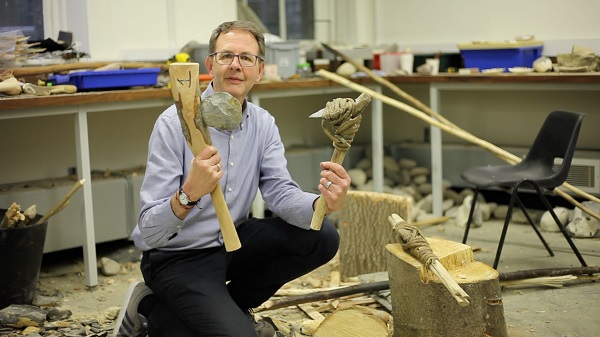Research conducted jointly by the University of Liverpool and Aberystwyth University has unveiled the construction of wooden structures by humans 476,000 years ago at Kalambo Falls, Zambia. This groundbreaking discovery, precisely dated through advanced techniques, illuminates early human settlement abilities and challenges prevailing notions about Stone Age ways of life.
In a revelation that predates previous estimates, humans were found to have fashioned wooden structures from half a million years ago, thanks to pioneering research by a team from the University of Liverpool and Aberystwyth University.
Changes our image of the age
Published in the journal Nature, the research documents the excavation of remarkably preserved wood at the archaeological site of Kalambo Falls, Zambia, dating back at least 476,000 years, preceding the emergence of our own species, Homo sapiens. Meticulous analysis of stone tool cut marks on the wood indicates that these early humans crafted and assembled two substantial logs, presumably forming the foundation of a platform or a portion of a dwelling.
This discovery represents the earliest evidence, anywhere in the world, of deliberate log crafting for structural purposes. Until now, indications of human wood use were limited to its utilitarian roles in fire-making, digging sticks, and spears. Preservation at Kalambo Falls Wood typically disintegrates and vanishes in ancient sites due to decay, yet at Kalambo Falls, consistently high water levels have preserved this wood.
This revelation challenges the prevailing notion that Stone Age humans were nomadic. In Kalambo Falls, these humans not only had a perennial water source, but the surrounding forest provided ample sustenance, enabling them to establish settlements and create structures. Professor Larry Barham, who leads the ‘Deep Roots of Humanity’ research project in the University of Liverpool’s Department of Archaeology, Classics and Egyptology, expressed:
“This discovery has reshaped my perception of our early ancestors. Disregard the ‘Stone Age’ label; consider what these individuals achieved: they innovatively and proficiently crafted something entirely novel, something hitherto unseen, something that had never existed before.”
“They harnessed their intellect, imagination, and expertise to enhance their environment, even if it was simply constructing a riverside platform for their daily tasks. These people bear a greater resemblance to us than previously believed.” Dating the Discoveries Specialist dating of the finds was conducted by experts from Aberystwyth University.
How the discovery was made
They employed innovative luminescence dating techniques, which unveil the last instance when minerals in the sand surrounding the discoveries were exposed to sunlight, thus determining their antiquity.
“At such a great age, ascertaining the age of finds presents considerable challenges, and we employed luminescence dating to overcome this hurdle. These new dating methodologies hold far-reaching implications, enabling us to delve deeper into the past and piece together sites that offer insights into human evolution. The Kalambo Falls site had been excavated in the 1960s, yielding similar wooden fragments, yet dating them proved impossible, leaving the true significance of the site uncertain until now,” Professor Geoff Duller from Aberystwyth University commented:
“Our research conclusively establishes that this site is considerably older than previously believed, further elevating its archaeological significance. This bolsters the argument for its recognition as a United Nations World Heritage Site,” Professor Duller elaborated.
This research forms an integral part of the pioneering ‘Deep Roots of Humanity’ project, an inquiry into the development of Stone Age human technology. The project enjoys funding from the UK’s Arts and Humanities Research Council and involves collaborations with Zambia’s National Heritage Conservation Commission, Livingstone Museum, Moto Moto Museum, and the National Museum, Lusaka.


